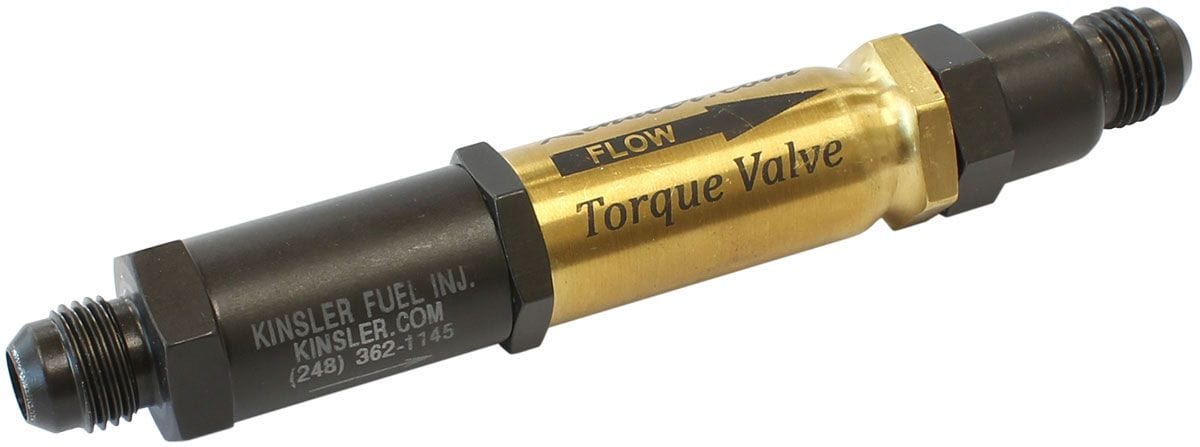Torque Valve Assembly
-6AN
KIN-3210
N-3210
The primary purpose for the Torque Valve is to bypass fuel and lower the system pressure when the engine is at Wide Open Throttle and the engine RPM is lower than the point where Peak Torque occurs. When the RPM is below the peak torque region, the engines volumetric efficiency is lower and the required fuel is reduced. Excess fuel can cause a loss in lower RPM torque output and cause the engine to falter during hard acceleration.
The Torque valve holds a "Jet" in the shuttle valve, (reverse flow poppet), which controls the bypass volume and also the force exerted by the flow to move the shuttle and close the valve. At any constant flow rate, a change in the jet diameter will create a change in the applied force to the jet and the corresponding shuttle. Example: Changing to a smaller diameter jet will decrease the flow at a given RPM and increase the pressure / force applied to the shuttle. The shuttle in this example will now close at a slightly lower RPM. The specific change in the pressure can be calculated by utilizing the formulas shown in the "Orifice Theory" on page 202 of Kinsler Handbook.
The "Opening" point, or initial bypass, of the Torque valve is controlled by an idle check valve located at the inlet. The idle check valve is intended to maintain the idle fuel pressure of an existing system so that the barrel valve will not require adjustment when the Torque valve is installed.
The "Torque Valve" must only have clean fuel passing through it and back to the fuel tank. The valve is plumbed in parallel to the main bypass and should not see any back-pressure on the return flow path back to the tank. We recommend that this valve be plumbed via a separate hose to prevent changes in the return flow pressure that might be caused by any other bypass valves.




